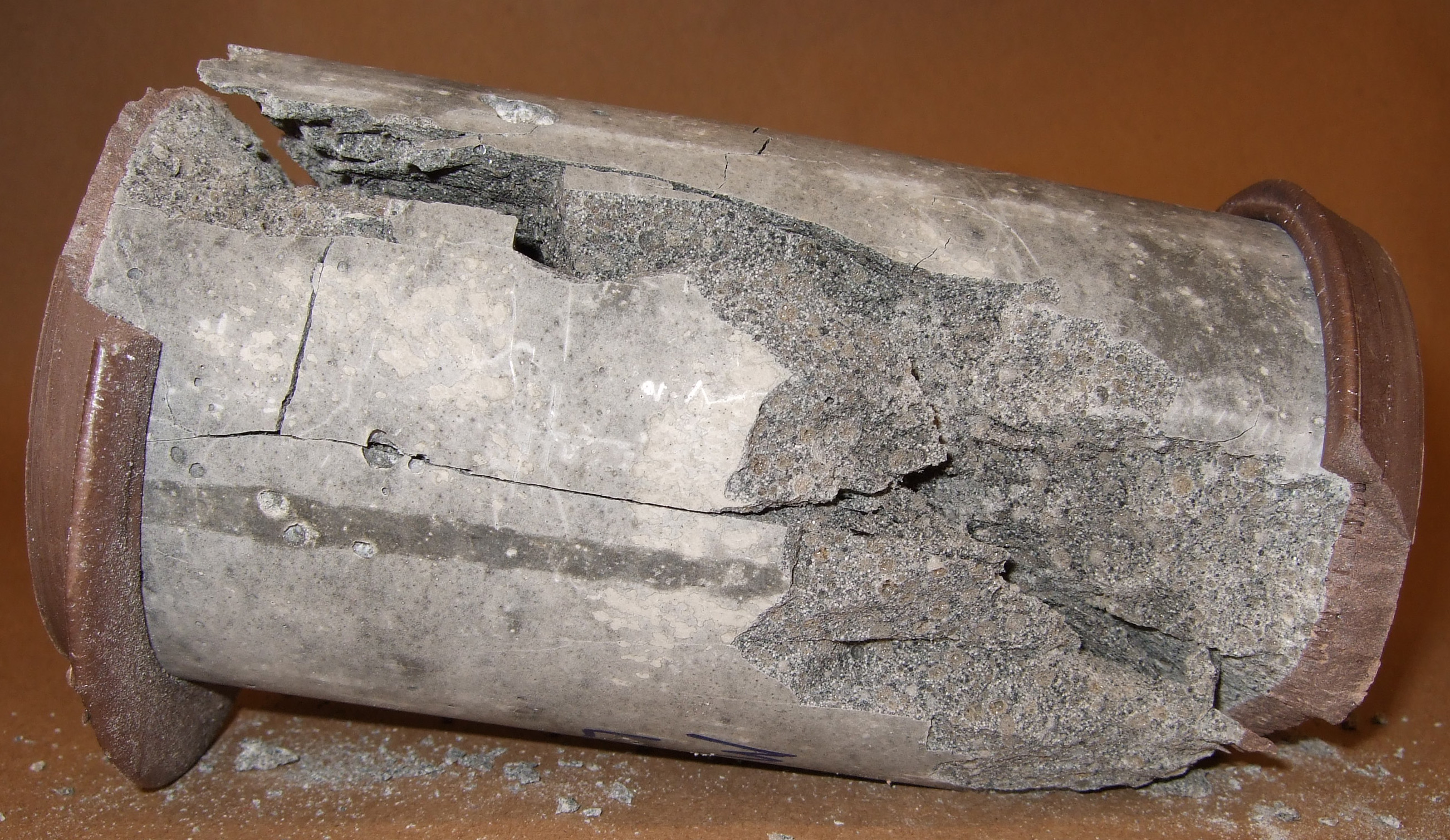User:Shawndouglas/sandbox/sublevel14
|
|
This is sublevel14 of my sandbox, where I play with features and test MediaWiki code. If you wish to leave a comment for me, please see my discussion page instead. |
Sandbox begins below
Title: What is the importance of a construction and engineering laboratory to society?
Author for citation: Shawn E. Douglas
License for content: Creative Commons Attribution-ShareAlike 4.0 International
Publication date: November 2023
Construction and geotechnical testing
From concrete and asphalt to construction site substrates like clay and rock, the proper quality and characterization of construction and engineering materials is critical to a construction project's long-term success. The importance of perfecting and using quality construction materials dates back millennia, for example to the Romans and their refinement of concrete recipes and production using pozzolanic and quicklime materials.[1] Even today, we learn that some sand types such as desert sand are inadequate for direct use in modern concrete due to their negative contribution to the necessary compressive strength of the concrete.[2] Should a contractor attempt a financial shortcut by using cheaper, less appropriate sand in their concrete mixes, future maintenance costs may go up at the least, or lives may be lost in a structural collapse at the worst.
Similarly, what is found and to be put under a construction site is also important. In this case, a sub-branch of materials testing is introduced in the form of geotechnical testing (or geotechnical investigation). With this kind of testing, the soil and rock is examined for load-bearing and seismic (i.e., engineering) properties to ensure any proposed structure can securely and durationally last over a specified period of time.[3] Geotechnical engineers examine soil and rock mechanics, soil-structure interactions, geomechanics, ground improvement strategies, and various stabilities, as well as characterize geomaterials with laboratory and in situ sampling and analysis.[4]
In both construction materials testing and geotechnical testing, a wide variety of physical, chemical, geological, and physics-based examinations take place before and during construction projects as a matter of good industry practices, as well as due to regulatory requirements. As with many other industries, the human and monetary losses from construction and engineering failures—accidental and malicious—has driven regulators at the federal, state, and local level to put testing requirements in place to better ensure human safety and improve the overall construction industry. This is discussed in greater detail in the next section.
Why is laboratory testing of construction and earth materials important to modern society?
In 2022, industry veteran Robert C. Rabeler published his findings regarding 10 geotechnical failure cases, including causes and lessons learned. In that work, Rabeler noted that failures typically occurred "due to poor understanding of the risks involved, a lack of proper geotechnical engineering involvement, poor communication, and a tendency to not spend enough resources to complete a thorough design."[5] He added that the risks of geotechnical failure (such as loss of life and investment) could have been limited through retaining the most knowledgeable and well-trained geotechnical services, being willing to pay for such services, and ensuring those engineers are actively involved with design and construction efforts.[5] Earlier work by Cummings and Kenton found "substandard [geotechnical] investigations, dishonesty and deceit, approval of substandard reports by reviewing agencies, and political influence" as factors in geotechnical failures, highlighting that such failures are people-related issues, not natural event issues. Essentially, their argument was "humans are fallible, including in the laboratory, and the 'highest quality of professional investigation' is required to ensure those risks are minimized."[6] The requirement for the "highest quality of professional investigation" aligns with the work of Rabeler and highlights how geotechnical testing in itself isn't enough for the benefit of society; that testing must be done well, with ethical, professional, and quality motivations driving it. In other words, choosing quality construction and earth materials testing is absolutely critical to ensuring the best outcomes for a society that depends on safe infrastructure (e.g., bridges and highways) and buildings (e.g., homes and office towers). Those outcomes include not only improved human safety and security (e.g., construction and seismic testing in earthquake-prone regions[7]), but also monetary benefit. Quality geotechnical investigation that incorporates proper laboratory and in situ' testing can help reduce the costs for ground improvement and overall construction, as well as reduce the chance for future disputes.[3]
Conclusion
References
- ↑ Chandler, D.L. (6 January 2023). "Riddle solved: Why was Roman concrete so durable?". MIT News. Massachusetts Institute of Technology. https://news.mit.edu/2023/roman-concrete-durability-lime-casts-0106. Retrieved 15 November 2023.
- ↑ Akhtar, Mohammad Nadeem; Jameel, Mohammed; Ibrahim, Zainah; Muhamad Bunnori, N.; Bani-Hani, Khaldoon A. (1 June 2023). "Development of sustainable modified sand concrete: An experimental study" (in en). Ain Shams Engineering Journal: 102331. doi:10.1016/j.asej.2023.102331. https://linkinghub.elsevier.com/retrieve/pii/S2090447923002204.
- ↑ 3.0 3.1 Patel, Anjan (2019), "Geotechnical investigation" (in en), Geotechnical Investigations and Improvement of Ground Conditions (Elsevier): 87–155, doi:10.1016/b978-0-12-817048-9.00009-3, ISBN 978-0-12-817048-9, https://linkinghub.elsevier.com/retrieve/pii/B9780128170489000093. Retrieved 2023-11-15
- ↑ "Geotechnical". University of Delaware. 2022. https://ce.udel.edu/research/research-overview/geotechnical/. Retrieved 15 November 2023.
- ↑ 5.0 5.1 Rabeler, Robert C. (17 March 2022). "Geotechnical Failure Case Studies—Lessons Learned" (in en). Geo-Congress 2022 (Charlotte, North Carolina: American Society of Civil Engineers): 301–315. doi:10.1061/9780784484036.031. ISBN 978-0-7844-8403-6. http://ascelibrary.org/doi/10.1061/9780784484036.031.
- ↑ Cummings, D.; Kenton, F.J. (2004). "Eleven Case Studies of Failures in Geotechnical Engineering, Engineering Geology, and Geophysics: How They Could Have Been Avoided" (PDF). Proceedings of the Fifth International Conference on Case Histories in Geotechnical Engineering. Missouri University of Science and Technology. ISBN 1887009078. https://scholarsmine.mst.edu/cgi/viewcontent.cgi?article=2518&context=icchge. Retrieved 15 November 2023.
- ↑ Syed, Z. (30 March 2023). "Why most countries don’t have enough earthquake-resilient buildings". Popular Science. https://www.popsci.com/environment/earthquake-engineering-buildings/. Retrieved 15 November 2023.










